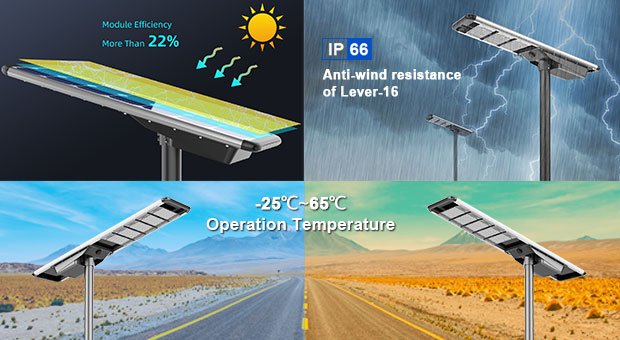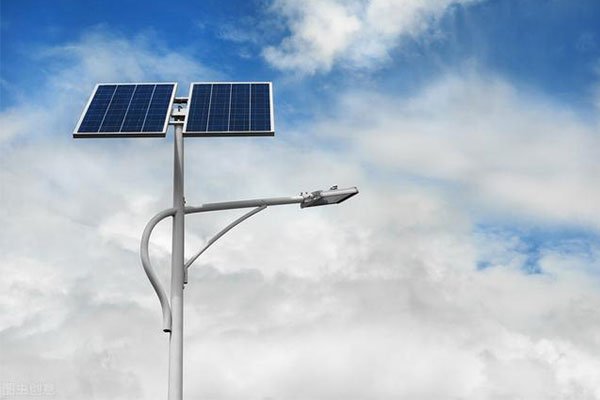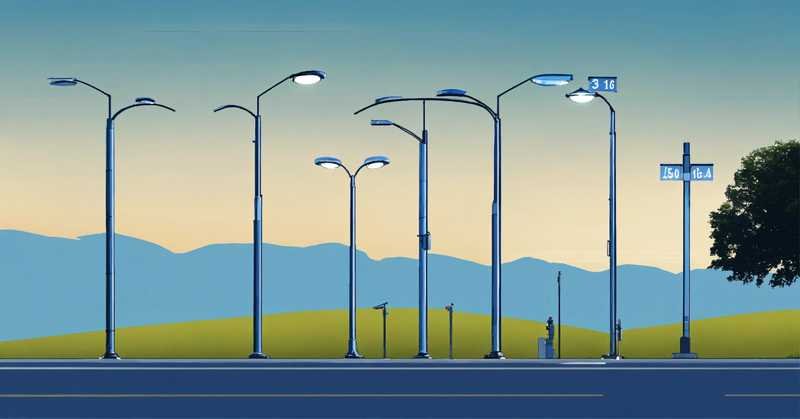Solar street lights provide a sustainable and efficient lighting solution, eliminating dependency on the traditional power grid. They use solar energy to power LED fixtures, making them ideal for urban and rural applications.
Introduction to Solar Street Lights
Solar street lights have emerged as a key solution for modern infrastructure. They provide reliable illumination without relying on external power sources. But how exactly do they function?
What Are Solar Street Lights?
Solar street lights are autonomous lighting systems that use solar energy to power LED lamps. These lights consist of solar panels, rechargeable batteries, controllers, and LED fixtures, ensuring efficient and sustainable operation.
How Do They Work?
During the day, solar panels absorb sunlight and convert it into electrical energy, which is stored in batteries. At night, a controller regulates the energy flow, ensuring that the stored power is used to illuminate the LED lights.
Importance in Sustainable Urban Infrastructure
Solar street lights reduce carbon footprints, lower electricity costs, and provide lighting in off-grid locations. They are an integral part of smart city initiatives and sustainable urban development.
Key Features of Solar Street Lights

Automatic On/Off Mechanism via Light Sensors
Most modern solar street lights have built-in sensors that detect ambient light levels. These sensors automatically turn the lights on at dusk and off at dawn, ensuring efficient energy use.
Nighttime Operation with Extended Backup
Advanced battery technology allows these lights to operate for multiple nights, even in low-sunlight conditions. This is crucial for locations with unpredictable weather patterns.
Wind-Resistant Designs for High-Wind Regions
Solar street lights are often installed in open spaces, making them vulnerable to high winds. Durable and aerodynamic designs ensure they withstand extreme weather conditions.
Smart Network-Enabled Control Systems
Many solar street lights come with smart controls, allowing remote monitoring and adjustment. Features such as dimming, motion sensing, and energy management optimize performance.
Essential Components of Solar Street Lights
3.1 Solar Panels
Function: Converting Sunlight into Electricity
Solar panels play a crucial role in harnessing solar energy. They convert sunlight into direct current (DC) electricity, which is stored in batteries for nighttime use.
Types: Monocrystalline vs. Polycrystalline Panels
| Type | Efficiency | Lifespan | Cost |
|---|---|---|---|
| Monocrystalline | High | 25+ years | Expensive |
| Polycrystalline | Moderate | 20+ years | Affordable |
Monocrystalline panels are more efficient and long-lasting, making them ideal for high-performance solar street lights.
Efficiency Comparison
Monocrystalline panels typically have an efficiency of 18-22%, while polycrystalline panels range between 15-18%. Higher efficiency means more power generation in limited space.
3.2 LED Lighting Fixture
Why LEDs? High Luminosity with Low Energy Consumption
LEDs consume significantly less power while providing bright illumination. They last longer and require minimal maintenance compared to traditional lighting options.
Energy Savings Compared to Traditional HPS Lights
LEDs consume up to 60% less energy than high-pressure sodium (HPS) lamps while providing the same or better brightness.
Motion Sensor Integration for Additional Efficiency
Many solar street lights include motion sensors that adjust brightness based on movement, conserving energy when no activity is detected.
3.3 Rechargeable Batteries
Role: Storing Solar Energy for Nighttime Use
Batteries store the energy generated by solar panels and supply power to the LED lights at night.
Types of Batteries:
| Battery Type | Lifespan | Efficiency | Maintenance |
|---|---|---|---|
| Gel Cell Deep Cycle | 5-7 years | Medium | Low |
| Lead Acid | 3-5 years | Low | High |
| Lithium-ion | 8-12 years | High | Very Low |
Lithium-ion batteries offer higher efficiency and longer lifespan, making them the preferred choice for modern solar street lights.
Battery Lifespan and Impact on Maintenance Costs
Longer-lasting batteries reduce the need for frequent replacements, lowering overall maintenance costs.
3.4 Poles and Mounting Structures
Importance of Durable and Wind-Resistant Poles
Street light poles must be strong enough to withstand harsh weather conditions, especially in high-wind areas.
Integrated Pole Designs vs. Traditional Setups
Integrated designs combine batteries, solar panels, and light fixtures into a single unit, making installation easier and more aesthetic.
Accessories: Foundation Cages, Battery Boxes
Foundation cages provide stability, while battery boxes protect against environmental damage and theft.
Types of Solar Street Lights

Standalone Solar Street Lights
Each unit operates independently, with its own solar panel and battery. These are ideal for remote locations.
Centrally Powered Solar Street Lights
Multiple lights are connected to a single, larger solar power system, reducing maintenance efforts.
All-in-One Solar Street Lights
Compact designs integrate all components, offering easy installation and modern aesthetics.
Innovative Solar Street Lighting
Some new designs incorporate additional energy sources, such as kinetic or wind power, to enhance efficiency.
Advantages of Solar Street Lights
- Energy Independence: Off-grid operation reduces electricity costs.
- Low Maintenance: No cables or transformers reduce maintenance requirements.
- Enhanced Safety: No external wires prevent accidents and vandalism.
- Eco-Friendly: Zero carbon emissions support sustainable development.
- Portable & Scalable: Can be installed anywhere, from highways to rural areas.
Challenges and Disadvantages of Solar Street Lights

Higher Initial Investment Cost
While solar street lights reduce long-term costs, their upfront installation expenses are higher than conventional lights.
Risk of Theft Due to Valuable Components
Solar panels and batteries can be stolen if not secured properly. Anti-theft designs and secure installations help mitigate this risk.
Efficiency Reduction from Snow, Dust, or Debris on PV Panels
Regular maintenance is required to keep solar panels clean and functional.
Battery Replacement Costs Over the System’s Lifetime
Batteries degrade over time, requiring periodic replacement to maintain performance.
Managing Charge-Discharge Cycles for Long-Term Cost Efficiency
Overcharging and deep discharging can shorten battery life. Advanced battery management systems help optimize performance.
Future Trends and Innovations in Solar Street Lighting
Smart Solar Street Lights with IoT and AI Integration
Connected systems enable remote monitoring and automated adjustments based on real-time conditions.
Hybrid Solar-Wind-Powered Street Lights
Combining solar and wind power ensures uninterrupted operation even during cloudy days.
Advanced Battery Technologies for Longer Lifespans
New energy storage solutions, such as solid-state batteries, promise extended durability and higher efficiency.
Urban Planning Strategies for Widespread Solar Adoption
Governments and urban planners are increasingly integrating solar lighting into city infrastructure for sustainable growth.
Conclusion
Solar street lights offer a cost-effective and sustainable alternative to traditional lighting. With advancements in battery technology and smart systems, their efficiency and reliability continue to improve. As cities prioritize green energy solutions, solar street lights will play a crucial role in modern urban development.







